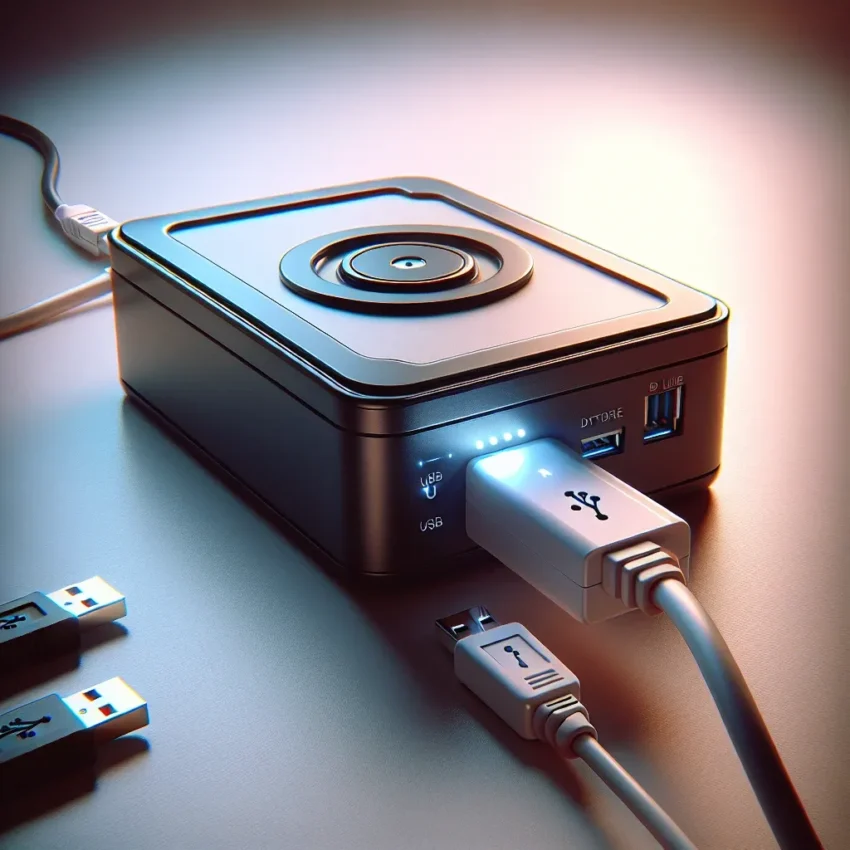External hard drives are essential tools for data storage, allowing users to save and transfer large amounts of information. However, many users have experienced the curious phenomenon of their external hard drives flashing when connected to a USB hub. These flashes can often be concerning and raise questions about the drive’s functionality. In this article, we will explore why your external hard drive flashes when connected to a USB hub, delve into the possible implications, and provide helpful troubleshooting tips.
| Reason | Description |
|---|---|
| Power Supply Issues | The hard drive may not be receiving adequate power from the USB hub. |
| Data Transfer Activity | The flashing indicates that the drive is actively reading or writing data. |
| Drive Health Alerts | Flashing might signal potential problems with the drive needing attention. |
| USB Hub Limitations | A hub may not support all devices or may be overloaded with traffic. |
Understanding External Hard Drive Indicators
External hard drives generally come equipped with LED indicators that serve as status signals. These lights can communicate various operational states, such as:
- Power On: A steady light usually indicates that the drive is powered up.
- Data Transfer: Flickering lights often signal data being transferred or accessed.
- Errors or Issues: A flashing light pattern may indicate that there is an issue with the drive.
Common Reasons for Flashing Lights
1. Power Supply Issues
One of the most frequent causes of flashing lights on an external hard drive when connected to a USB hub is insufficient power supply. USB hubs, especially unpowered ones, may not deliver enough energy to the drive. External hard drives typically require more power than standard USB devices like keyboards or mice. If the USB hub is underpowered, the drive may go into a power-saving mode, causing the light to flicker as it attempts to function.
2. Data Transfer Activity
Another leading reason for your external hard drive to flash is active data transfer. The LED indicators are designed to notify users when data is being read from or written to the drive. In this case, consistent flashing signals normal operation, indicating that your drive is functioning as expected. However, excessive or constant flashing could imply a larger issue—such as a faulty connection or corrupted data.
3. Drive Health Alerts
Some models of external hard drives are equipped with advanced technology that utilizes LED indicators to communicate their health status. If your drive flashes in a specific pattern, it may be trying to alert you about potential problems, such as:
- Disk errors
- File system corruption
- Temperature warnings
4. USB Hub Limitations
Not all USB hubs are created equal, and some may have limitations that could affect connected devices. A hub that supports multiple devices could become overloaded if too many high-power devices are connected simultaneously. This overload can cause erratic behavior in attached peripherals—including flashing indicators for external hard drives. If your USB hub is not rated for high-performance devices, it may struggle to maintain stable connections.
Troubleshooting Tips
Assessing Power Supply
If you suspect that a power supply issue is to blame for the flashing lights, consider the following steps:
- Use a Powered Hub: Invest in a powered USB hub to ensure that your external hard drive receives adequate power.
- Direct Connection: Temporarily connect the drive directly to your computer’s USB port to see if the flashing persists.
Checking Data Transfer Status
When you notice flashing lights, consider the following:
- Observe File Activity: Ensure that no ongoing backup, transfer, or scanning process is occurring concurrently with your drive being connected.
- Monitor Performance: Use file management tools to check transfer speeds; significant lag or failure may indicate issues with the hub.
Inspecting Drive Health
To check the health of your drive, perform the following:
- Run Diagnostics: Use included software or third-party tools to perform a health check on the drive.
- Review Manufacturer Guidelines: Refer to the documentation for your hard drive model regarding LED indicators and their meanings.
Testing USB Hub Functionality
To determine if your USB hub is causing issues, take these steps:
- Try Another Hub: Test the external hard drive with a different USB hub or directly with the computer.
- Limit Connected Devices: Disconnect other peripherals from the hub to see if this resolves the flashing issue.
Preventive Tips for External Hard Drive Maintenance
To ensure the longevity and efficiency of your external hard drive, consider the following maintenance tips:
- Safely Eject Drives: Always unmount your drive before physically disconnecting it from the USB hub.
- Keep Software Updated: Regularly update drivers and software to enhance functionality and performance.
- Backup Data: Create regular backups of your data to prevent loss in case of drive failure.
- Stay Disciplined in Usage: Avoid using the drive for tasks that may overstrain its capacity.
Conclusion
Experiencing a flashing external hard drive when connected to a USB hub is a common issue that stems from several potential causes, from power supply deficiencies to normal data transfer activity. By understanding these reasons and following the troubleshooting steps and maintenance tips outlined in this article, you can prolong the life of your external hard drive and ensure it operates smoothly. Addressing these flashing signals proactively can help prevent data loss and maintain the integrity of your valuable files.

